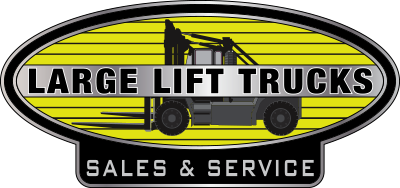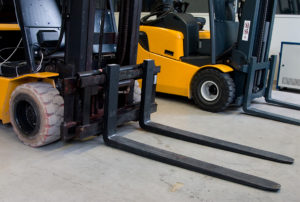How Much Weight Can A Forklift Lift?
Forklifts have different lifting capacities; the standard forklifts have 3000 to 5000 pounds whereas industrial and heavy-duty forklifts can lift about 10,000 to 50,000 or more pounds. The specific weight-lifting capacity of a forklift is calculated based on the model and design. In this blog, let’s discuss the factors that affect the lifting capacity of a forklift, the types of forklifts and their lifting capabilities, and how to determine the forklift’s capacity.
What are the factors that affect the lifting capacity of a forklift?
Some of the factors that affect lifting capacity of a forklift are:
- Forklift type: There are different models of forklifts; they are industrial forklifts, standard warehouse forklifts, and heavy-duty forklifts, and all those models have different lifting capabilities.
- Attachments: Some of the attachments like rotators, clamps, and fork spreaders will reduce the forklift’s overall capacity.
- Load Center: The load center is the distance from the industrial forklifts and standard warehouse forklifts that have varying lifting capabilities.
- Lifting height: When the forklift is lifted higher, its capacity decreases.
Types of Forklifts and Their Lifting Capabilities
- Standard warehouse forklifts: Standard forklifts have a capacity of 3,000 to 5,000 pounds.
- Industrial Forklifts: They are capable of lifting loads from 10,000 to 20,000 pounds.
- High capacity forklifts: They can lift more than 30,000 pounds and some high capacity forklifts can lift about 125,000 pounds.
- Specialized forklifts: Some of the forklifts including rough terrain forklifts have capacities ranging from 5,500 to 35,000 pounds.
- Order pickers: They are designed to pick packaging items from a height and have lower weight capacities around 1,000 to 3,000 pounds.
Points to Ponder
- Rated capacity Vs. Net Capacity: Rated capacity is the maximum weight lifting capacity of a forklift that is listed on the forklift’s data plate whereas the net capacity is the actual weight the forklift can carry. Some of the factors that affect the net capacity are attachments, terrain, and mast type.
- Load Center: The horizontal distance between the fork and the center of gravity of the load is called the load center. It is one of the important factors that determines the forklift’s capacity.
- Attachments: Attachments may affect the forklift’s capacity so it is important to check the data plate to ensure the forklift’s capacity is appropriate with attachments.
- Stability: Make sure the load is balanced and stable to avoid accidents or tipping.
- Load size and shape: MakesSure the load is not unbalanced or irregularly shaped as it affects the forklift’s capacity.
How to determine the forklift’s capacity?
To determine the right forklift’s capacity, consider the factors like maximum loads handled in your facility, the maximum height you need to lift those loads, and the type of terrain in which you operate the forklift. It is important to choose the forklift that exceeds your daily lifting needs and also consider the factors like capacity reduction with attachments, and load center changes.
Below are the steps to determine the forklift’s capacity.
Find your load requirements:
- Identify the heaviest loads that the forklift has to typically lift.
- Calculate the maximum height that you need to lift loads.
- Evaluate the distance between the load’s edge and center of gravity as it is known to affect capacity.
Check the forklift’s data plate:
- The data plate has the maximum load capacity of the forklift at a specific load center.
- The load capacity chart describes how the capacity decreases with the increased height and load center.
Attachments:
- Every attachment has a rated capacity and their overall capacity is limited if a low-rated component is used.
- Attachments will change the forklift’s center of gravity and lifting capacity.
Terrain and usage
- Consider the terrain and usage into account to estimate the forklift’s weight-lifting capacity.
- If you’re using the forklift on uneven surfaces consider a rough terrain forklift and estimate how frequently you use the forklift to select the workload that the forklift can handle.
Safety features
It is important to choose a forklift capacity that is higher than your typical lifting requirements. Estimate the load’s weight and distance from the forklift’s axle of load moment to avoid tipping risk and stability impact.
To select the right forklift for your industry, estimate the weight lifting needs, consider the impact of load centers, and attachments, and provide importance to safety by selecting the forklift that handles your heaviest industrial loads with a safety margin.
To determine the forklift’s weight-lifting capabilities for your industrial requirements, contact our expert today.
If you are looking to buy a new or used forklift for your workplace, you’re in the right place. Large lift trucks offer a range of forklifts from all leading brands that meet your specific purpose. We also provide forklifts for short-term or long-term rentals in Houston, Texas. Talk to our expert today and select the right forklift for your industry.
FAQs
How much weight can a Forklift lift?
Forklifts have different lifting capacities; the standard forklifts have 3000 to 5000 pounds whereas industrial and heavy-duty forklifts can lift about 10,000 to 50,000 or more pounds.
What are the factors that affect the lifting capacity of a forklift?
Some of the factors that affect lifting capacity of a forklift are forklift type, attachments, load center and lifting height.




